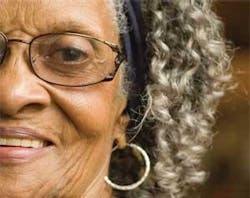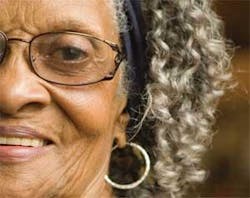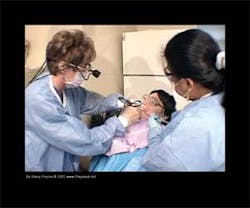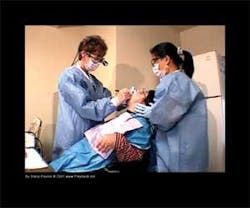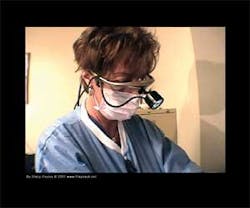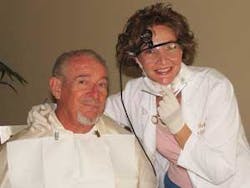Touching Hearts, Teeth, & Lives
Given dedication, hard work, and a bit of altruism, Registered Dental Hygienists in Alternative Practice not only touch hearts and teeth, but they also touch lives.
by Kristen LeClair, RDH, BA
By now most of us have heard of the California RDHAP. The “Really Dedicated Hardworking Altruistic People” — am I right? I used to think the “AP” stood for “alternative practice” (which, of course, it does), but having spent a couple of days shadowing two incredible women with RDHAP licensure, the acronym clearly holds a different meaning for me today. According to the dictionary, altruism means having the principles or practice of unselfish concern for, or devotion to, the welfare of others. As hard as I try, I cannot see any other reason an individual would be drawn to this side of our profession.
RDHAPs — Who They Are and What They Can Do
For those in need of a refresher, a Registered Dental Hygienist in Alternative Practice is a dental hygienist who has earned additional education (a bachelor’s degree or its equivalent), worked for at least three years in the field, and completed a program designed to gain licensure to treat those in need of preventive dental services who otherwise wouldn’t have access to care, including seniors, poor, minorities, and other underserved populations (University of the Pacific, n.d.). Many individuals will greatly benefit from these services particularly if they are homebound/bedridden, developmentally disabled, transportation challenged, or in assisted living/skilled nursing facilities. Initially this service required the patient seeking preventive dental services to have a written prescription by a dentist or physician, but as of Jan. 1, 2007, California RDHAPs have been able to treat individuals without this prescription for the first “18 months after the patient’s initial visit” and “once obtained, that prescription is valid for 24 months” (Sarfaraz, L., 2007). Eliminating this barrier of the written prescription altogether would serve to further increase access to care for those in need of an RDHAP.
Services legally allowed by the RDHAP include screening for decay and oral cancers, charting, periodontal evaluations, oral prophylaxis, root planing, pit and fissure sealants, and application of fluoride (for more specific information, go to www.comda.ca.gov). These services allow for the basic preventive treatment to be provided by RDHAPs; however, oftentimes additional restorative care will be required which then must be referred to a dentist willing to treat these individuals.
Kristina and Elsie — A Compassionate Rapport
My first visit began with Kristina Compton, RDHAP. On a beautiful October afternoon, we went to see a homebound, bedridden woman with severe dementia, whom I will call Elsie. Kristina works part time as an RDHAP and in private practice. RDHAPs may need to submit insurance claims for their patients and therefore must wait on payment at times. When there are mortgages and bills to be paid, and mouths to feed, a reliable paycheck is very important.
Upon entering this home, Kristina and I were met by two women caretakers who directed us to Elsie’s bedroom. We immediately noticed signs of the hard work that goes on in this house. There were boxes of adult diapers stacked up along the walls, cases of Ensure, and the air smelled of urine and dirt. I say this from a place of understanding that when caring for a bedridden, elderly person, the reality is what it is.
Seeing Elsie lying in her bed brought about an unexpected wave of emotion. Although I’m not entirely sure what that was all about, I assume it may have been a culmination of realizing my own mortality and knowing that the person lying there has been an important part of a family — a mother, a daughter, a sister, a friend … not just a bedridden woman with dementia who can no longer take care of herself. As much as I would have liked to help, I could only sit in amazement and watch Kristina, a highly competent RDHAP, set up a portable dental operatory right next to Elsie’s bed. Let me tell you, just watching the setup of this operation was exhausting and proved to be quite a workout. Kristina developed a rapport with Elsie by way of touch and soothing language to let her know everything will be all right.
With the “operatory” prepared, Kristina was able to begin her dental hygiene services from the edge of Elsie’s bed. She performed an oral examination, checking for signs of oral cancer and dental caries. She charted periodontal readings to the best of her access and ability, and then began the oral prophylaxis using her portable ultrasonic scaler, hand scalers, and saliva ejector. Instantly, I saw the sheer difficulty in gaining access to the teeth given Elsie’s body position and her ability to understand simple requests.
Imagine your most difficult patient in private practice — you know, the one with the large, barrel chest, short neck, intruding chin, small opening, huge tongue, and strong lips. The appointment is necessary — the patient is paying for your services — but he or she doesn’t understand why this procedure is such a pain in the neck and hates every minute in the dental chair. The patient may or may not cooperate (depending on the mood of the day), and as the hygienist you must do your absolute best for your patient given personal ability and the time available.
What I observed as Kristina provided her services to Elsie was much more than physical care; there was an unspoken understanding between practitioner and patient. The RDHAP treats many patients who cannot tolerate the average 45- to 60-minute appointment, so accommodations must be made. Providing the best comprehensive care while having compassion to know how much is enough is a difficult balance. I am told that each patient brings an entirely new set of considerations. RDHAPs must be on the top of their game, understanding various case studies including medications, medical emergencies, etc. What was evident about Elsie is that she truly appreciated this care. Her face exuded a certain childlike peacefulness as she asked Kristina, “Did you hear the angels singing?”
After the preventive care was complete, Kristina informed the caretakers that Elsie had three areas of decay that should be followed up with a dentist. She also instructed them about how to brush Elsie’s teeth on a daily basis to decrease the likelihood of oral infection. What transpired at that point will remain forever in my mind. The caretakers, as much as they love Elsie, looked overwhelmed as they voiced their concern about how to transport Elsie, what dentist would even see Elsie, and how much money would this would cost them. They also spoke about the difficulty dealing with the physical aspects of brushing Elsie’s teeth. Sadly, this is not uncommon, which further emphasizes the need for the RDHAP.
Darci and Aleta — Working Like A Well-Oiled Machine
My next visit was with Darci Trill, RDHAP. I was invited to arrive at Darci’s home by 8:30 a.m. to join her and her assistant, Aleta, on their day’s journey. There, I saw her pristine garage transformed into a dental hygiene storage/sterilization area that would make any of us shake our heads in amazement. The sheer organization and operation of being an “independent practitioner” without an office is challenging at best, but with determination and some skill, it can be done and done well! While most RDHAPs do not have or need an assistant, I became a firm believer in the usefulness of one by day’s end.
This journey began at a home for the developmentally disabled on a sunny December morning. For those of you who have seen “I am Sam” with Sean Penn, you can somewhat envision the characters who met us at the door. It was as if long-lost family had come home for a visit. We were greeted with enthusiastic welcomes, handshakes, and chatter about the holidays. This was truly one of the warmest welcomes I can ever recall having when dental work was involved. This home is owned and operated by an individual licensed to take care of the developmentally disabled. Darci treats these special individuals on a four-month recall; the necessity for more individualized care is apparent, but this is not a perfect world.
Darci and Aleta work together like a well-oiled machine. It is obvious to me just how much effort and thought have gone into Darci’s practice which she calls the “Golden Scalers.” From the garage/office to the transportation and setup onsite, this team knows how to check and restock the necessities before setting out. The impeccable communication between RDHAP and assistant allows the team to treat several patients a day. “Darci, can I go next?” was a question asked by most of the endearing patients there. These patients were animated, happy, loving, and fun to be around. There is no question that the services provided by Darci (and all RDHAPs) are so needed by each of the residents in this home and elsewhere. “Darci, you’re special and I love you” was a comment from one sweet woman being treated. The lightbulb went on for me at that moment. While I’ve always believed hygienists to be highly educated, skilled professionals, I now see how deeply we can touch an individual’s life.
Both Kristina and Darci spent a long time talking to me about their experiences working as RDHAPs. As I listened, I learned that each is driven by the desire to care for those in desperate need of our preventive services — the people who have limited ability or financial means to seek care otherwise. A direct and powerful extension of their preventive services comes by way of their proactive work for the entire dental hygiene profession. They both fight to get laws changed and to remove the red tape held tightly by the dental association. This is a challenging and frustrating fight, enough to make most hygienists want to throw up their hands and say, “I give up!” What I noticed about both of these women is that they are absolutely intent on fighting this fight.
Given dedication, hard work, and a bit of altruism, RDHAPs not only touch hearts and teeth, but they also touch lives.
About the Author
Kristen LeClair, RDH, BA, began her career in dentistry 24 years ago; first as a certified dental assistant, then as a registered dental hygienist. She holds a business management degree from St. Mary’s College in Moraga, California and has a solid understanding of dentistry as a business. Kristen practices clinical dental hygiene in Berkeley, CA., volunteers teaching clinical at both Diablo Valley College in Pleasant Hill, CA, and Chabot College in Hayward, CA, and is currently pursuing her MSDH from Idaho State University. Her passion is education; both gaining and sharing.
